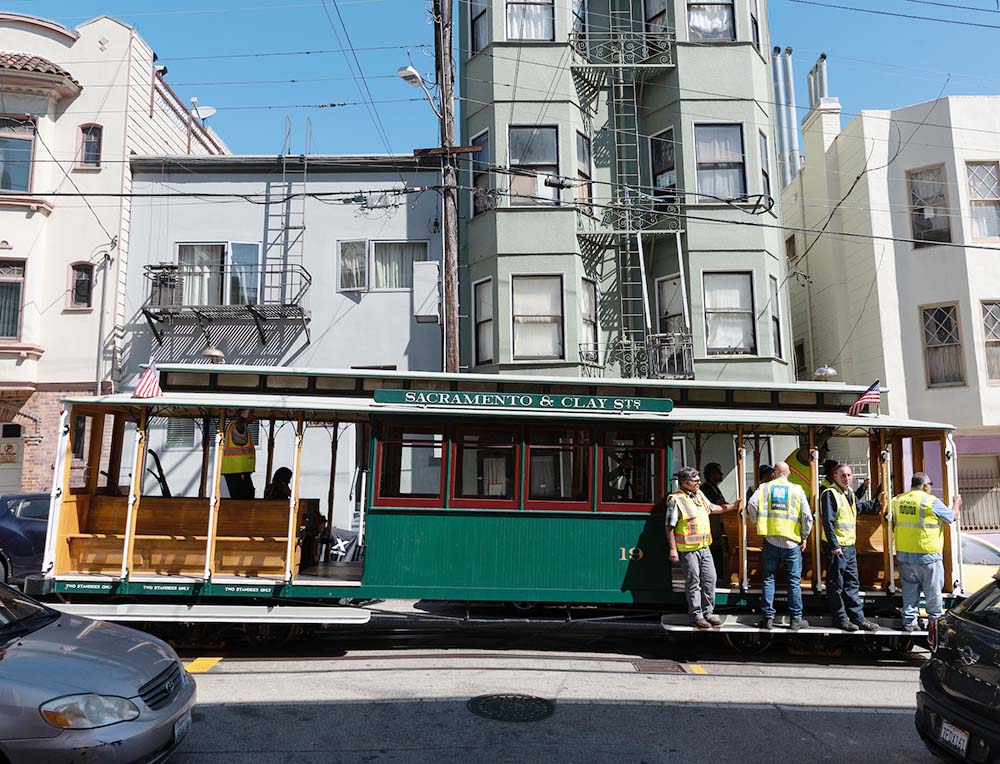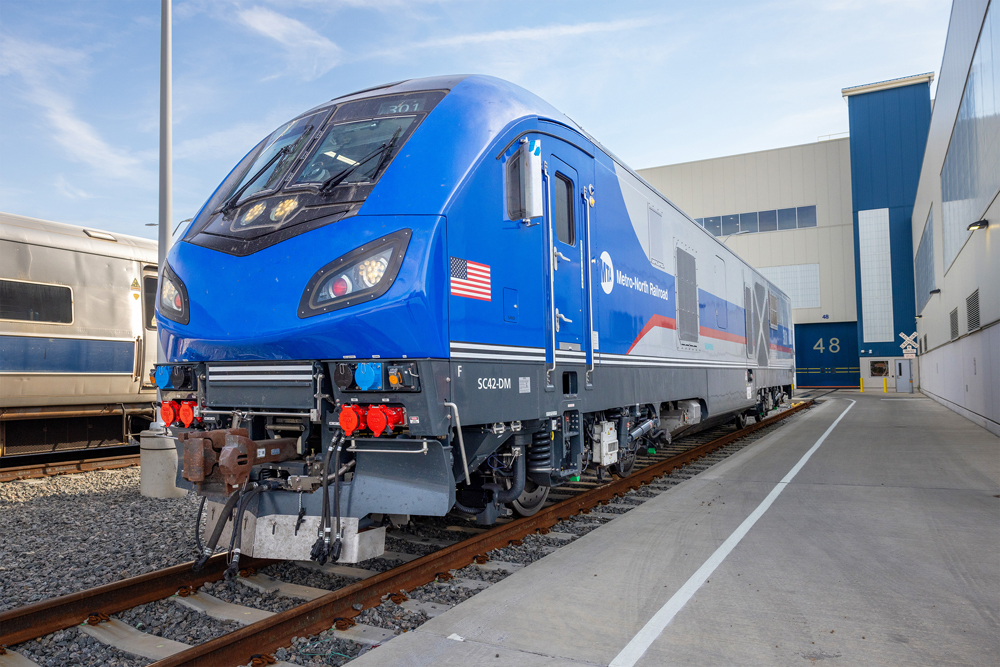Sacramento-Clay Line cable car No. 19 – also known as “Big 19” – ran on the California Street Cable Car Line on Saturday and Sunday as part of San Francisco Municipal Transportation Agency’s annual MUNI Heritage Weekend. The annual event is organized in coordination with the nonprofit Market Street Railway and allows the public ride historic vehicles that rarely see the light of day.
While there were numerous historic buses, streetcars and cable cars roaming the streets of San Francisco – including two “boat trams” from Blackpool, England, and the world’s oldest operating streetcar still owned by a transit agency – the star of the show was the recently restored No. 19.
Cable car No. 19 was built in 1883 for the Market Street Cable Railway Co., which later became part of the United Railroads of San Francisco. At 35 feet long and 14,000 pounds, No. 19 was among the largest cable cars ever built. The car ran down Market Street until the 1906 earthquake destroyed all of the cable car routes on that thoroughfare and was replaced with electric cable cars. No. 19 survived the earthquake and fires and was later transferred to the Sacramento-Clay Line, where it ran until 1942.
The car was slated to be displayed at a museum but those plans never materialized and so it sat in obscurity at MUNI’s cable car carpentry shop. In the 1990s, Market Street Railway began to advocate for the restoration and MUNI did some work on the car but quickly learned that due to its size it would be hard to run the car on any of the three surviving cable car routes. The car stayed in storage for another 20 years.
Earlier this year, some MUNI employees decided to take another shot at getting the car out of the shop and adjusted its running boards and trucks. In July, the car was pushed through every curve and hump on the California Street Line – a route it had never run before – and it cleared every test. A week later, it was connected to a cable and ran for the first time on its own since World War II.
This weekend, it performed flawlessly on the California Street Line and it’s expected to make appearances at special events in the future.















If what I have read about the car it was originally built with 4’8 1/2″ gauge and converted to 3’6″ gauge.
I worked as a maintenance mechanic at the mill that made the cable for the San Francisco Cable Cars, the Paulsen Wire Rope Corporation of Sunbury, PA. I remember the machine operator saying that the construction of the strand was unsual, an old-fastioned construction whose outer wires were two different sizes. We assumed the construction was used for historical accuracy.
Paulsen went bankrupt in 2002. There were two changes of ownership since then, and a major fire, though the machine I saw making the strand, T-26-4, was not damaged, and has run since the fire. I ended up at another facility owned by the present owner, Wirerope Works, Inc. I have no idea if or where the San Francisco cable is manufactured now.
It is great they put in the effort getting this car back on the system, and it is a great story about the car’s journey through the years. Despite the fact they are often crammed with tourists and often treated as a glorified amusement park ride, I always enjoyed the times I have rode the cable cars in SF. During our last visit to the Bay Area I got to introduce my boys to the experience of riding the running boards on a cable car through the City. When we came to a stop at the bottom of a long decent my son asked me what “that smell was” – That would be the hint of smoke from the wooden break blocks…
It was pushed with a large wrecker. There were photos on the MSRy group on Facebook. One of the gripmen (Val Lupiz) has been very active on that Facebook group and is super nice.
As for being an amusement park ride….I used to live on the lower part of Nob Hill (Bush Street between Powell and Stockton) and sometimes I just didn’t want to climb the hill from Market Street. It was glorious riding up even that short distance. Walking up to California and taking the Cal line Downtown to see clients was also super fun.
“Pushed the car….” How was that done?
Nice article, Justin.